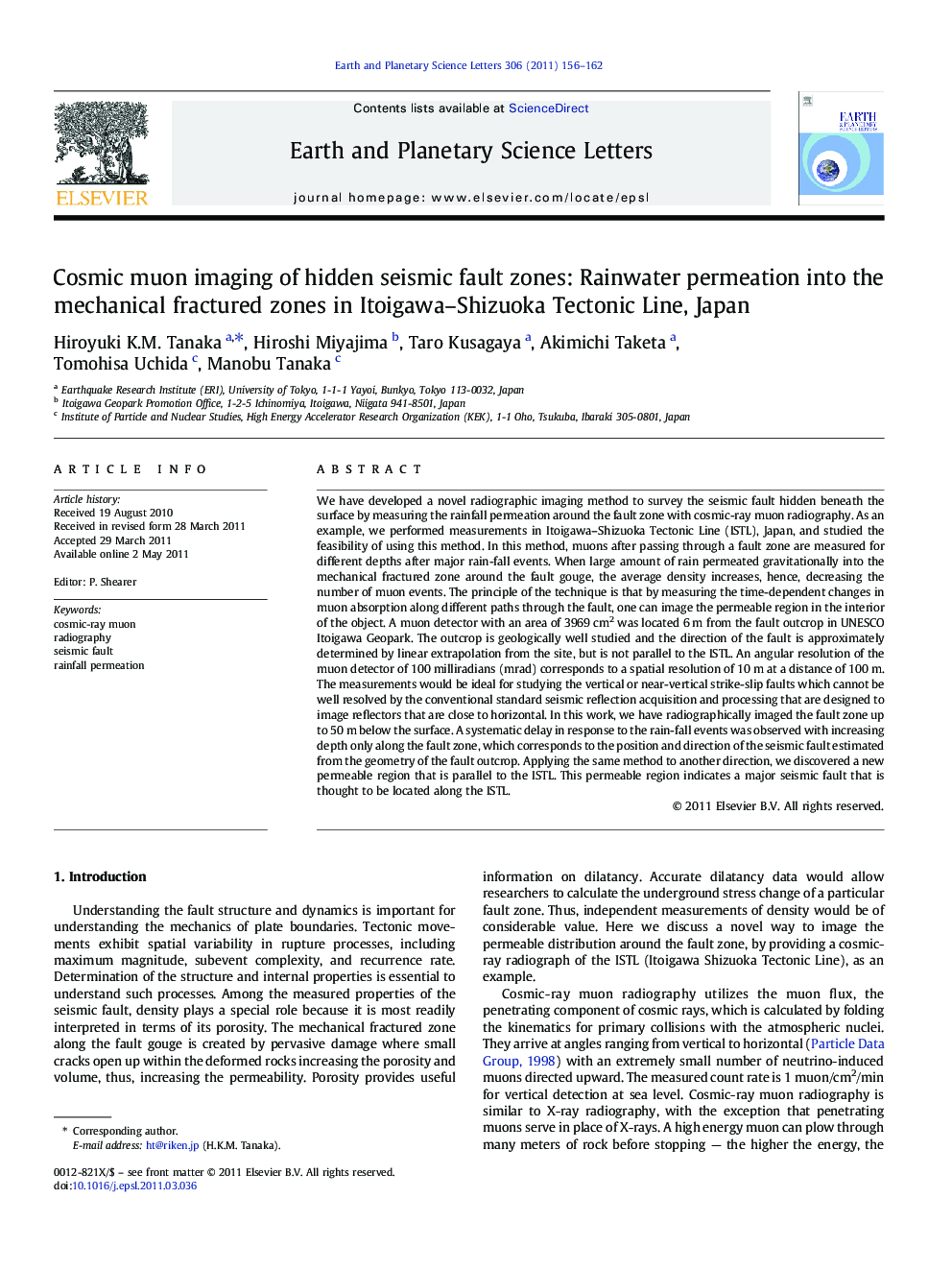| Article ID | Journal | Published Year | Pages | File Type |
|---|---|---|---|---|
| 4678005 | Earth and Planetary Science Letters | 2011 | 7 Pages |
We have developed a novel radiographic imaging method to survey the seismic fault hidden beneath the surface by measuring the rainfall permeation around the fault zone with cosmic-ray muon radiography. As an example, we performed measurements in Itoigawa–Shizuoka Tectonic Line (ISTL), Japan, and studied the feasibility of using this method. In this method, muons after passing through a fault zone are measured for different depths after major rain-fall events. When large amount of rain permeated gravitationally into the mechanical fractured zone around the fault gouge, the average density increases, hence, decreasing the number of muon events. The principle of the technique is that by measuring the time-dependent changes in muon absorption along different paths through the fault, one can image the permeable region in the interior of the object. A muon detector with an area of 3969 cm2 was located 6 m from the fault outcrop in UNESCO Itoigawa Geopark. The outcrop is geologically well studied and the direction of the fault is approximately determined by linear extrapolation from the site, but is not parallel to the ISTL. An angular resolution of the muon detector of 100 milliradians (mrad) corresponds to a spatial resolution of 10 m at a distance of 100 m. The measurements would be ideal for studying the vertical or near-vertical strike-slip faults which cannot be well resolved by the conventional standard seismic reflection acquisition and processing that are designed to image reflectors that are close to horizontal. In this work, we have radiographically imaged the fault zone up to 50 m below the surface. A systematic delay in response to the rain-fall events was observed with increasing depth only along the fault zone, which corresponds to the position and direction of the seismic fault estimated from the geometry of the fault outcrop. Applying the same method to another direction, we discovered a new permeable region that is parallel to the ISTL. This permeable region indicates a major seismic fault that is thought to be located along the ISTL.
Research Highlights► Radiographic imaging method to survey the seismic fault hidden beneath the surface. ► We measured the rainfall permeation around the fault zone with cosmic ray muons. ► There is a general trend of delaying in response to the rainfall events.
